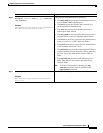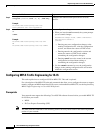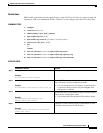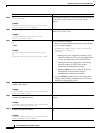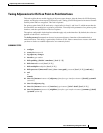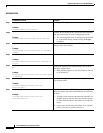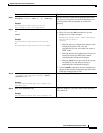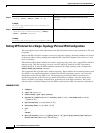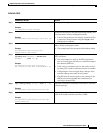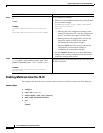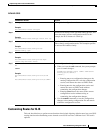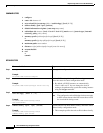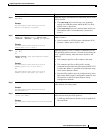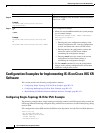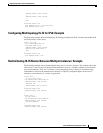
Implementing IS-IS on Cisco IOS XR Software
How to Implement IS-IS on Cisco IOS XR Software
RC-116
Cisco IOS XR Routing Configuration Guide
Setting SPF Interval for a Single-Topology IPv4 and IPv6 Configuration
This task explains how to make adjustments to the SPF calculation to tune router performance. This task
is optional.
Because the SPF calculation computes routes for a particular topology, the tuning attributes are located
in the router address family configuration submode. SPF calculation computes routes for Level 1 and
Level 2 separately.
When IPv4 and IPv6 address families are used in a single-topology mode, only a single SPF for the IPv4
topology exists. The IPv6 topology “borrows” the IPv4 topology; therefore, no SPF calculation is
required for IPv6. To tune the SPF calculation parameters for single-topology mode, configure the
address-family ipv4 unicast command.
The incremental SPF algorithm can be enabled separately. When enabled, the incremental shortest path
first (ISPF) is not employed immediately. Instead, the full SPF algorithm is used to “seed” the state
information required for the ISPF to run. The startup delay prevents the ISPF from running for a
specified interval after an IS-IS restart (to permit the database to stabilize). After the startup delay
elapses, the ISPF is principally responsible for performing all of the SPF calculations. The reseed
interval enables a periodic running of the full SPF to ensure that the iSFP state remains synchronized.
SUMMARY STEPS
1. configure
2. router isis instance-id
3. address-family {ipv4 | ipv6} [unicast]
4. spf-interval {[initial-wait initial | secondary-wait secondary | maximum-wait maximum]
...}[level {1 | 2}]
5. ispf [startup-delay seconds] [level {1 | 2}]
6. ispf startup-delay seconds [level {1 | 2}]
7. end
or
commit
8. show isis [instance instance-id] spf-log [level {1 | 2}] [ipv4 | ipv6] [unicast] [ispf | fspf | prc]
[detail] [internal] [last number | first number]
Step 12
show isis [instance
instance-id
] interface [
type
instance
] [brief | detail] [level {1 | 2}]
Example:
RP/0/RP0/CPU0:router# show isis interface POS
0/1/0/1 brief
(Optional) Displays information about the IS-IS
interface.
Step 13
show isis [instance
instance-id
] neighbors
[
interface-type
interface-instance
] [summary]
[detail] [systemid
system-id
]
Example:
RP/0/RP0/CPU0:router# show isis neighbors summary
(Optional) Displays information about IS-IS neighbors.
Command or Action Purpose




